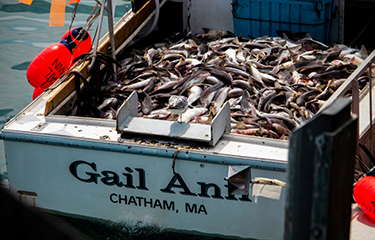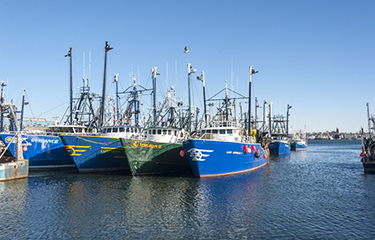 Massachusetts
Massachusetts
Of the five states with approved plans, Massachusetts has received the greatest portion of the CARES Act funding with just over USD 28 million (EUR 23.7 million) allocated to state fishery relief. The state’s plan indicates that of that total, USD 27.8 million (EUR 23.5 million) will be sent to fishery participants in the form of direct payments, with the difference going to administrative costs.
Massachusetts’ spend plan also acknowledges that in the face of the historic losses for the state’s fisheries, the CARES Act funding will likely not go far enough, and that allocations are being made with the severity of impact in mind.
“MA DMF [Massachusetts Division of Marine Fisheries] estimates that current economic impacts for this year could approach [USD] 500 million [EUR 423 million] and the [USD] 28 million of CARES Act fisheries relief allocated to the state is estimated to only cover a portion of the losses,” the state’s spend plan said. “To date, over [USD] 50 million [EUR 42.3 million] in total losses in ex-vessel value alone have been documented in Massachusetts during the months of March through May with losses occurring in all fisheries.”
Taken as a whole, the largest losses as a percentage of ex-vessel value in Massachusetts have been suffered by the oyster aquaculture industry, which has seen a 70 percent drop in value from USD 6.3 million to USD 1.89 million (EUR 5.34 million to EUR 1.60 million). Even the best-performing fishery – groundfish – has seen a drop of 22 percent.
The state’s largest fishery by value, scallops, has seen a 36 percent drop in ex-vessel value, from USD 102 million to USD 65 million (EUR 86 million to EUR 55 million).
Regardless of the overall totals, businesses that have seen a 35 percent or greater loss of revenue caused by COVID-19, relative to a five-year period, will qualify for funds. All recipients of funds must be valid permit holders with one or more permit: Commercial fishing, wholesale dealer, aquaculture propagation, and for-hire recreational. The Atlantic State Marine Fisheries Commission is managing all payments to identified recipients, barring those participating in the for-hire recreational portion.
Funding allocations have been made to each sector, keeping those sectors' relevant importance and values in mind. A good example of this is the state’s allocations to aquaculture, which takes into account the disproportionate impact that sector has faced.
“Based on state commercial landings data, aquaculture purchases make up roughly 1.2 percent of the total revenue estimated by NOAA; however, the sector allocation was set at 2.4 percent to better reflect the disproportionate impact experienced by the industry, compared to the commercial industry as a whole,” the spend plan states.
Under Massachusetts’ plan, wholesale dealers will receive an allocation of USD 13,779,789 (EUR 11,686,083), with compensation being determined by a number of factors – including number of employees.
Commercial fishing businesses in Massachusetts will receive an allocation of USD 11,828,404 (EUR 10,030,790).
“Qualifying criteria: MA DMF has an excellent Statistics Program which has provided all dealer-certified data for ex-vessel price, yearly amounts and averages, and identification of active fishers. These statistics will be used to establish minimum criteria, identify applicants, and determine preliminary tiering amounts based on dealer-reported data,” the plan states.
Tiers that will be compensated range from tier 1, comprised of harvesters making annual income of between USD 15,000 and USD 31,050 (EUR 12,718 and 26,326); and the highest tier, tier 6, comprised of harvester making an annual income between USD 521,500 and 8.1 million (EUR 442,173 and 6.8 million). Those making less than USD 15,000 a year will not receive any funding.
Aquaculture operations will receive an allocation of USD 1.1 million (EUR 932,000), with specific amounts determined in a similar fashion to harvesters, with separate tiers determining funding. The lowest tier for aquaculture ranges from USD 7,500 to USD 49,286 (EUR 6,357 to 41,777), with the highest tier ranging from USD 300,000 to USD 2.4 million (EUR 254,295 to 2.03 million).
“Massachusetts’ fisheries play an enormous role in Massachusetts’ overall economy. We have a unique chain of harvesters, dealers, growers, and tourist-related industries dependent on our fisheries,” the spend plan states. “This aid will not make our fisheries whole, but it is our hope that it will assist them in some meaningful way until a time when the economy and lifted restrictions can support normal distribution.”
Photo courtesy of Arthur Villator/Shutterstock







